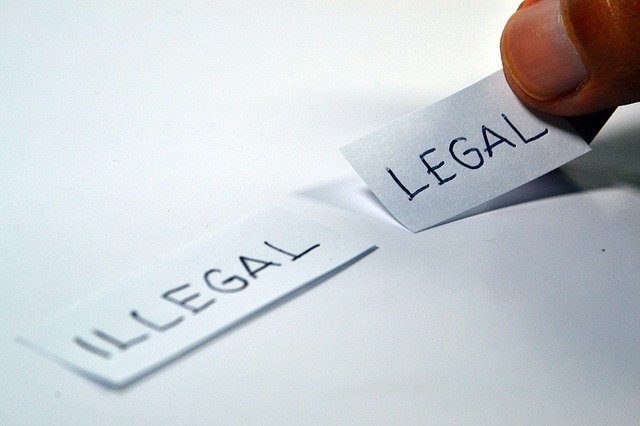While slacklining is a perfectly legal activity to do using trees on private property, it’s not as cut and dry when it comes to public land such as parks and recreational areas. The issue of liability also comes into play in both cases.
Slacklining is generally a legal activity in the US in public places but there are a number of parks and cities that do not allow it. Whether for liability concerns or to protect trees, some jurisdictions including parks prohibit slacklining on public land.
As laws change from time to time, it’s best to find out ahead of setting up a slackline what local rules exist so you do not run afoul of the law. Slacklining on both public and private property also raises the issue of liability in the case of an injury whether directly on the slackline or because of it being left in place and injuring someone, or worse.
Slacklining Injuries
We live in a litigious society and whether we like it or not, people get sued and are forced to take responsibility for injuries caused to others. Like other sports and physical activities, slacklining can cause injury and even death in the extreme. While safety should be maintained at all times, the reality is that you can be injured by slacklining even when care is taken or with slacklining equipment being left up and unattended.
Having said that, research shows that globally dating back to 1999 slacklining injuries are relatively low all things considered. The most common injuries reported are fractures (broken bones) and sprains. Most injuries are reported by more experienced slackliners who tend to get injured using Tricklines and Longlines. Basic slacklines that are less than 98 feet (30m) long and less than 3 feet (1m) high reported relatively few injuries.
The most commonly reported reason for injuries was falling from the slackline reiterating the importance of learning how to fall correctly since falling does inevitably occur when slacklining.
Tree Usage
Using trees in public for slacklining raises several important considerations. First if you’re using trees in a park or on other public land, damaging the trees could cause you trouble if the area is patrolled or monitored by a park ranger, police or other authority. A bigger problem can be in the case of an injury either to yourself or someone else who uses the slackline. More on that below.
Tree damage is a real thing with slacklining and it isn’t difficult to find pictures and videos online of slackliners who still don’t use tree protection. Tree protection is typically a thick cloth often made of a special type of felt that gets wrapped around the tree. The slackline is then installed around and over top of the tree protector to eliminate damage to the outer bark. The thicker the tree protector and more you can spread out the slackline over the protector, the less the pressure is concentrated on the tree.
Monitoring Of Public Spaces
In a public place, damage to anything whether trees or park benches or other areas gives an impression that this sort of activity is tolerated and may encourage other people to disregard rules thereby causing even more damage. The more that public spaces are kept clean and undamaged, the more likely they will remain that way.
Many slackliners have reported – including some with video – of being approached by park rangers or other people in authority and telling them they aren’t allowed to slackine on the property in question. In other cases, slackliners are told that they are required to have a permit to do so. Whether or not having a permit is accurate or even true is another story. Sometimes people in positions of authority misinterpret rules and in other cases, they simply make them up on the spot.
Liability
Slacklining in public raises a number of potential concerns and hazards especially if the slackline is left in place and someone is injured.
Can you be held liable for an accident caused by slacklining or by the slackline itself on public property? A court found Utah State University liable in 2017 for the death of one of its students who was riding his bike on campus and ran into a slackline that had been installed by several other students.
It should also be noted that even on private property, injuries can be a legal concern if someone is hurt.
Conclusion
- Is slacklining legal? Generally it is legal in public areas but some jurisdictions and parks have restrictions and rules. Slacklining.us wrote an article several years ago with information on which areas can be problematic.
- While slacklining on private property using your own trees isn’t a concern, liability is still an issue if someone else is injured while using a slackline on your property.
- Public slacklining isn’t as cut and dry given different laws, interpretation of laws and possibility of liability should someone get injured or killed on public property as the Utah State University case above illustrates.
- If you’re slacklining on public land, it’s best to get the most recent information from whatever authority is in charge ahead of time to be safe.
Recent Posts
Slacklining is a fun activity that doesn't require much equipment beyond a slacklining kit but is challenging enough that you won't get bored quickly. Once you get comfortable you can start adding...
Slacklining is a great activity because it balances (no pun intended) and tests a number of your muscles and skills so that you improve each one with experience. As you increase your slacklining...


